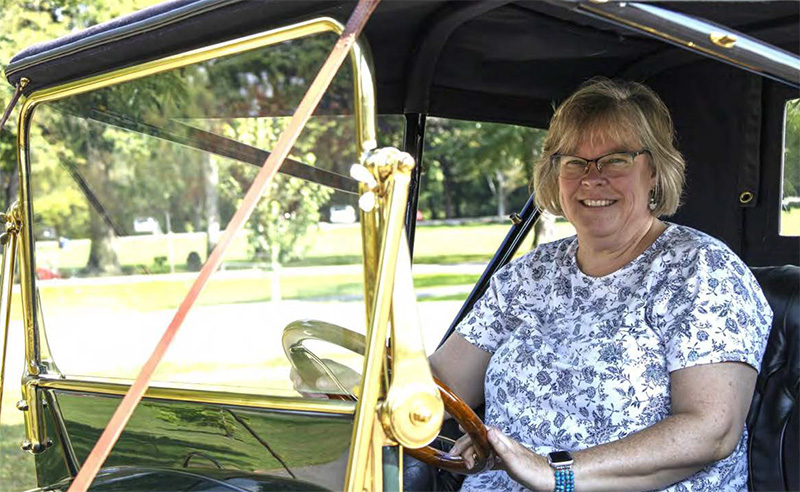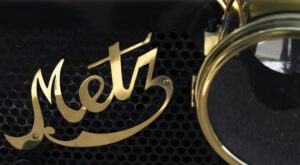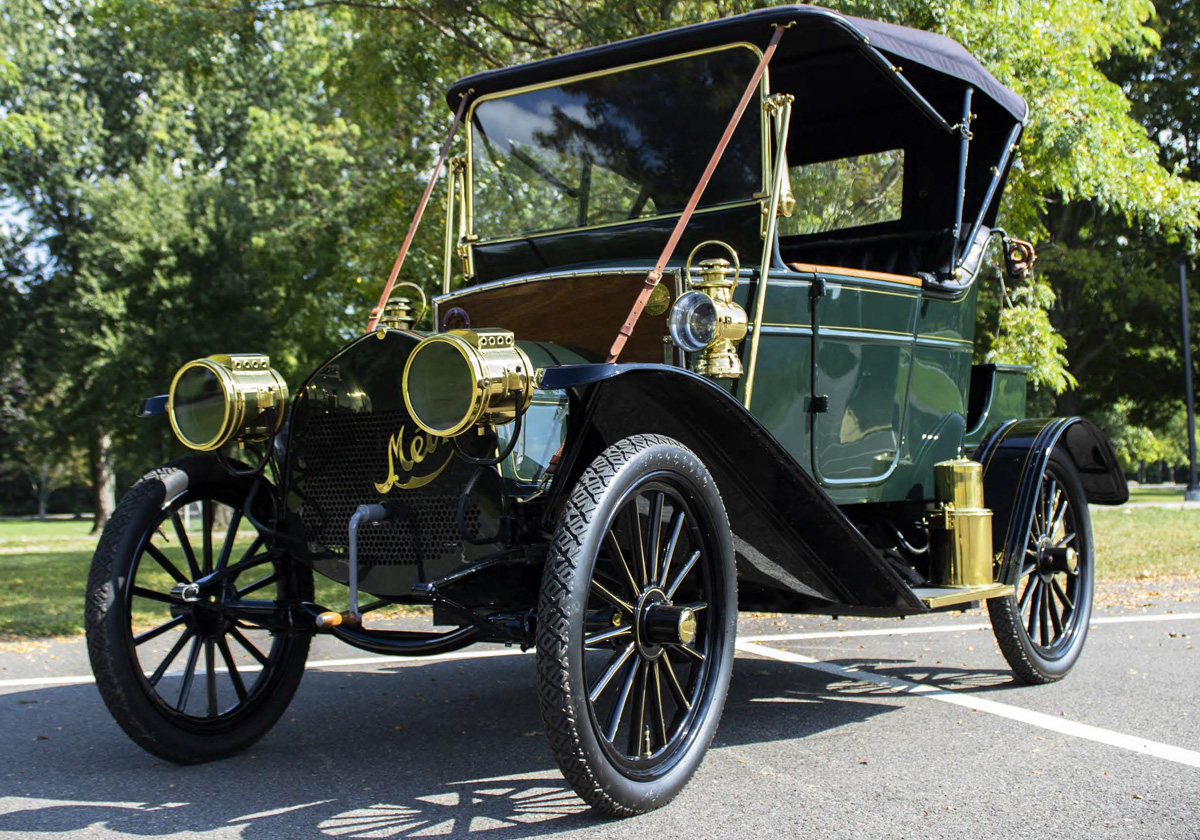From Tammy…..

During my travels to England this summer, I participated in the Ellis Journey, a tour retracing the first British motorcar trip in 1895. The Honorable Evelyn Ellis traveled the original journey in a four-horsepower Panhard car. He traveled at 10 m.p.h. flagrantly disregarding the 4 m.p.h. speed limit. Today, only automobiles from before 1905 are permitted to participate in the journey. I rode in a 1904 Cadillac owned by my friend Simon. During the journey I became interested in owning a brass era car of my own. I decided I would like a car on the smaller side. While Simon was browsing online auto auctions he saw a 1910 Metz on the Owl Head Transportation Museum’s Annual Auction list. The Metz had no reserve, and we thought I could get it at a reasonable price. I decided to take a chance and registered to bid by phone. To my delight I won the bid.
The next step was to arrange to pick up the Metz in Maine, roughly 485 miles east from where I live. Another friend and I decided to drive my truck and trailer to Maine. The trip took three days with time built in to visit the museum before driving back to New York. As soon as I got back I had to immediately repack and head to an antique car event in Michigan. I was in such a rush that I did not even have time to get the Metz out of the trailer.
He traveled at 10 m.p.h. flagrantly disregarding the 4 m.p.h. speed limit.
Since returning home from Michigan, I have had the chance to unload the Metz and start it. It is a fun little car, and I am looking forward to enjoying it. The car is titled as being from 1910, although the documentation that came with it indicates that it’s from 1909 and was most likely a home assembled car. It has a two-cylinder engine and a friction drive. I have already planned my first adventure with it to the AACA Eastern Divisional Fall Meet at Hershey in a couple of weeks.
Here is a little bit about the Metz and its origins…….
The Metz Runabout was a small car intended for running errands such as going to the post office, market, or bank. It was more economical than taking a larger touring car. Metz Runabouts started out as ten-horsepower, two-cylinder opposed, ball bearing, air-cooled engine and a friction drive mechanism with an eighty-one-inch wheelbase and in 1912 they changed the engine to a twenty-two horsepower, four-cylinder and expanded to a ninety-inch wheelbase.

Charles Metz originally started making Orient bicycles in Waltham, Massachusetts in 1893. His company, Waltham Manufacturing, produced America’s first motorcycle. In 1898 the company expanded and started producing automobiles as well. However, Mr. Metz left the company in 1901 after disagreements with investors. He produced motorcycles on his own for a while but in 1908 Metz’s got his original company back. By then Waltham Manufacturing was in financial trouble, with large debts and an even larger inventory of parts. Metz decided he could create packages of car parts, that would be sold to buyers who would then assemble the cars at home. Thus, creating a practical solution to the company’s troubles. Although Metz was not the first to offer a home assembled vehicle (Dyke and Sears predated Metz with do-it-yourself high-wheelers), Metz offered the first known home assembled automobile on an installment plan, known as the “Metz Plan.” The buyer would buy fourteen packages of parts for $25 each (later raised to $27) which would be put together with the plans and tools supplied. This was a total price of $350, (equivalent to $12,107 in 2024). This was an immediate success and by 1909 Metz had paid off the company’s debts. At this point, he reorganized the company into the Metz Company and began offering factory assembled cars for $475.
After shutting down car production during World War 1, Metz had trouble restarting the business and the company closed in 1922.
He traveled at 10 m.p.h. flagrantly disregarding the 4 m.p.h. speed limit


Leave a Reply